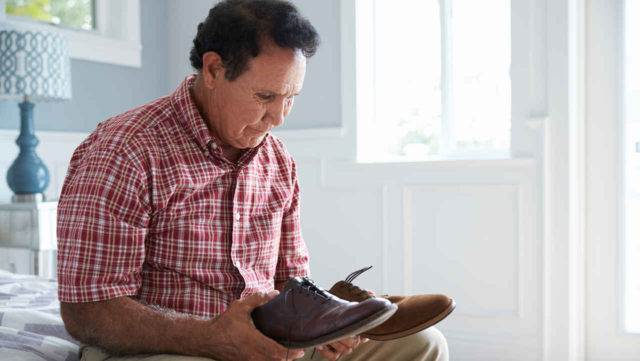 Here are 11 ways to prevent injuries caused by falls, whether at home or on the go.
Here are 11 ways to prevent injuries caused by falls, whether at home or on the go.
Millions of people fall every year. Although anyone at any age can fall, falls are especially troublesome for adults aged 65 and over. That’s because falls are the leading cause of non-fatal and fatal injuries in this age group.
The good news is that falls can often be prevented.
“All eleven steps are very important but I would like to emphasize the last one: exercise, exercise, exercise. It’s never too late to start an exercise routine”
Here are 11 steps you can take to reduce your risk of falling at home and while you’re out:
- Wear the right shoes. Choose properly-fitting shoes with good traction, especially when it is wet, snowy or icy outside.
- Stand up carefully. When you get up from a chair or exit a car, place both feet firmly on the ground and take a moment to steady yourself.
- Pay attention. Look at what’s in front of you so you can avoid obstacles that may cause you to trip and fall. Don’t let yourself become distracted.
- Don’t rush. Give yourself enough time to get where you need to go. Being in a hurry increases your chance of falling.
- Watch where you walk. Avoid walking on ice or snow. Wet grass can also be very slippery. Also be on the lookout for cracks, uneven surfaces or obstacles in your path.
- Move deliberately. Quick movements may cause you to lose your balance. Taking shorter steps helps keep your body more stable.
- Light it up. Add more lighting, brighter bulbs, motion sensor lights or nightlights in your home so you are able to easily see where you are going.
- Remove tripping hazards. Keep pathways clear of objects that may get in your way. Get rid of loose rugs or make sure they’re firmly secured to the floor.
- Store items in reach. You’re less likely to lose your balance if items are easy to get to and you don’t have to stretch, bend or climb to retrieve them.
- Install safety devices. Place non-slip mats in showers, tubs and in front of sinks. Install hand rails and grab bars where needed, such as along stairs and in bathrooms.
- Exercise. Engage in physical activities that improve your strength, flexibility and balance such as Tai Chi, yoga or water workouts.
Copyright 2019 © Baldwin Publishing, Inc. All rights reserved.
Health eCooking® is a registered trademark of Baldwin Publishing, Inc. Cook eKitchen™ is a designated trademark of Baldwin Publishing, Inc. Any duplication or distribution of the information contained herein without the express approval of Baldwin Publishing, Inc. is strictly prohibited.
Date Last Reviewed: August 21, 2019
Editorial Review: Andrea Cohen, Editorial Director, Baldwin Publishing, Inc. Contact Editor
Medical Review: Perry Pitkow, MD
Learn more about Baldwin Publishing Inc. editorial policy, privacy policy, ADA compliance and sponsorship policy.
No information provided by Baldwin Publishing, Inc. in any article is a substitute for medical advice or treatment for any medical condition. Baldwin Publishing, Inc. strongly suggests that you use this information in consultation with your doctor or other health professional. Use or viewing of any Baldwin Publishing, Inc. article signifies your understanding and agreement to the disclaimer and acceptance of these terms of use.